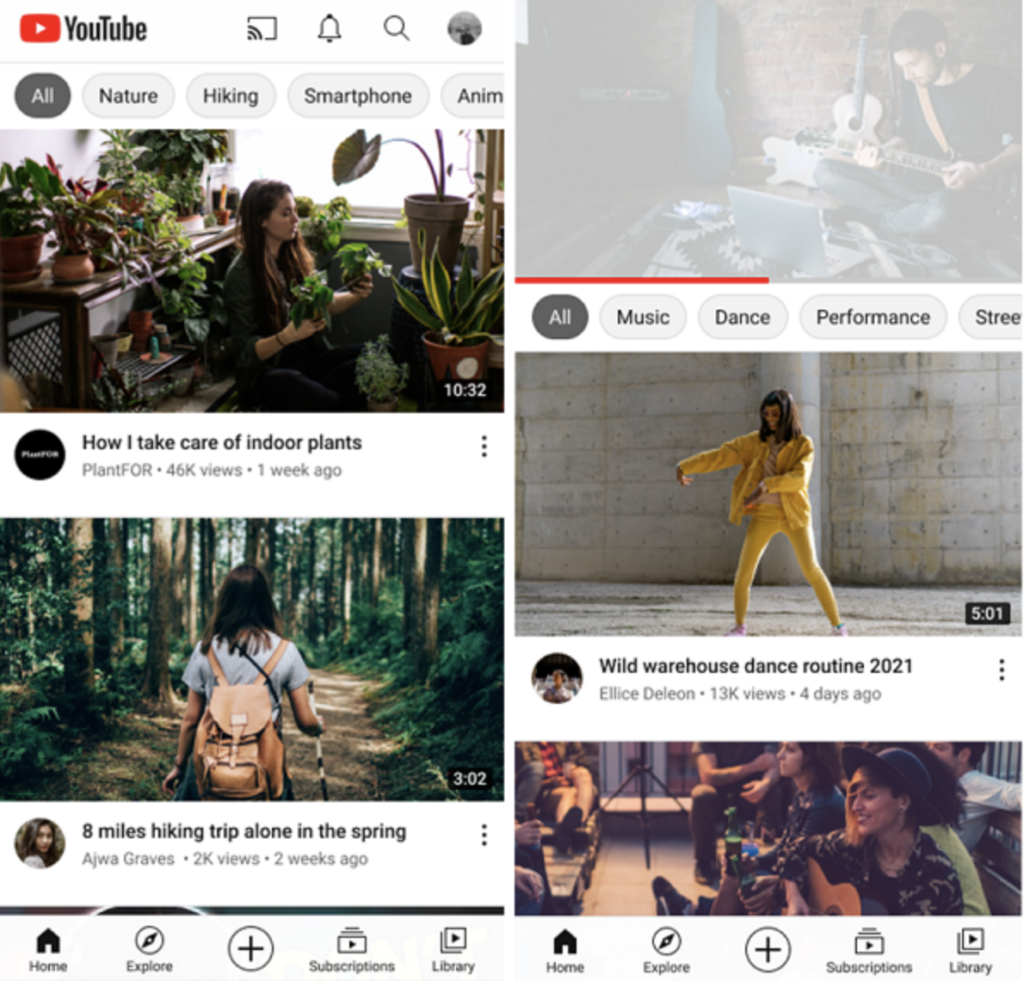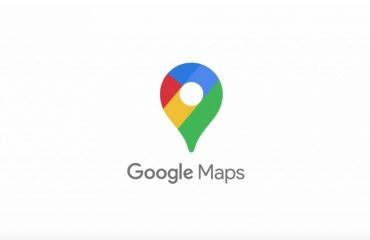
Youtube recently published a new overview of how its recommendation engine works, which may help marketing professionals a lot. As Youtube said:
“Our recommendation system is built on the simple principle of helping people find the videos they want to watch and that will give them value.”
“Value” is a vague term in social media metrics, but according to Youtube the idea is to show users more of what they like, based on not just their own behaviors, but also according to similar users.
See more about social media trends here.
How recommendations works
“You can find recommendations at work in two main places: your homepage and the “Up Next” panel. Your homepage is what you see when you first open YouTube—it displays a mixture of personalized recommendations, subscriptions, and the latest news and information. The Up Next panel appears when you’re watching a video and suggests additional content based on what you’re currently watching, alongside other videos that we think you may be interested in.”

‘Up Next’ panel has been one of the platform’s elements most studied over the last few years.
So, how does this happen?
Here are some signals about how the engine works, based on four main elements:
- Clicks: Clicking on a video provides a strong indication that you will also find it satisfying. After all, you wouldn’t click on something you don’t want to watch. But it’s not all, because you may click on something you think you’ll like but you don’t.
- Watchtime: Your watchtime — which videos you watched and for how long—provides personalized signals to the system about what you most likely want to watch. “So if our tennis fan watched 20 minutes of Wimbledon highlight clips, and only a few seconds of match analysis video, we can safely assume they found watching those highlights more valuable.”
- Sharing, Likes, Dislikes: On average, people are more likely to be satisfied by videos that they share or like. The system uses this information to try to predict the likelihood that you will share or like further videos. If you dislike a video, that’s a signal that it probably wasn’t something you enjoyed watching.
- Survey Responses: To really make sure viewers are satisfied with the content they’re watching, they measure what it’s called “valued watchtime”—the time spent watching a video that you consider valuable. “We measure valued watchtime through user surveys that ask you to rate the video you watched from one to five stars, giving us a metric to determine how satisfying you found the content. If you rate a video one to two stars, we ask why you gave such a low rating. Similarly, if you give the video four to five stars, we ask why—was it inspirational or meaningful? Only videos that you rate highly with four or five stars are counted as valued watchtime.”
All these elements that you could probably have guessed would be taken into consideration, so there is now news about this. Even though it’s also interesting noticing that Youtube also helps you to find content you may like and didn’t think it existed, based on what people with similar profiles like.
“So if you like tennis videos and our system notices that others who like the same tennis videos as you also enjoy jazz videos, you may be recommended jazz videos, even if you’ve never watched a single one before.”
Discover our instagram, click here..
Low Quality Content
Youtube also points out that it’s working on how to limit these recommendations to what they identify as “low quality content”. But, what are these?
“We’ve used recommendations to limit low-quality content from being widely viewed since 2011, when we built classifiers to identify videos that were racy or violent and prevented them from being recommended. Then in 2015, we noticed that sensationalistic tabloid content was appearing on homepages and took steps to demote it. A year later, we started to predict the likelihood of a video to include minors in risky situations and removed those from recommendations. And in 2017, to ensure that our recommendation system was fair to marginalized communities, we began evaluating the machine learning that powers our system for fairness across protected groups—such as the LGBTQ+ community.”
Other than that, Youtube also prohibits content with false health allegations (as a conspiracy video against COVID), while also taking more steps to address political misinformation. Some of this type of material is still available, of course, but YouTube is working to improve its systems to ensure that this material is not recommended through its discovery tools.
A very important consideration regarding this element is related to “authoritarian” or “borderline” content.
In seeking to limit the reach of borderline clips — those that don’t necessarily break the platform’s rules but feature potentially harmful material — YouTube uses human evaluators to assess the quality of information on each channel or video.
“These evaluators hail from around the world and are trained through a set of detailed, publicly available rating guidelines. We also rely on certified experts, such as medical doctors when content involves health information.”
To determine authoritativeness, evaluators answer a few key questions:
- Does the content deliver on its promise or achieve its goal?
- What kind of expertise is needed to achieve the video goal?
- What’s the reputation of the speaker in the video and the channel it’s on?
- What’s the main topic of the video (eg. News, Sports, History, Science, etc)?
- Is the content primarily meant to be satire?
YouTube raters assess a channel/creator’s reputation based on a variety of qualifiers, including online ratings, expert recommendations, news articles, and Wikipedia entries (you can check out the full list of possible qualifiers here).
In short, the system is designed to use both explicit and implicit signs to highlight more of what each person wants to see, as well as filtering out the worst types of content in order to limit possible harm. The actual specifics of the damage are a factor in this calculation, and limiting that reach – but again, YouTube says it’s working to update its recommendation tools to ensure higher quality content, based on these qualifiers at least, it ends up getting more exposure in the app.
When evaluating the various measures from a marketing and performance perspective, the primary consideration is audience response and creating content that appeals to your target viewers.
You can measure this in your YouTube analytics page, and with users able to subscribe directly to your channel, there are some strong and important metrics you can use to evaluate your performance and ensure you’re aligning with viewer interests. This will cause your content to be shown to others with similar audience traits as well, ensuring you have a good reputation on the site and a strong overall web presence, and will also limit potential penalties in the YouTube moderators rating.
It’s also worth checking your content against the ‘authority’ listing above as a quick measure of whether you’re in accord with YouTube’s goals.
None of these elements will guarantee the ultimate success of the outreach, but don’t following these recommendations is sure to limit its potential.
Looking for help in producing your content? Contact us and tell your story!





